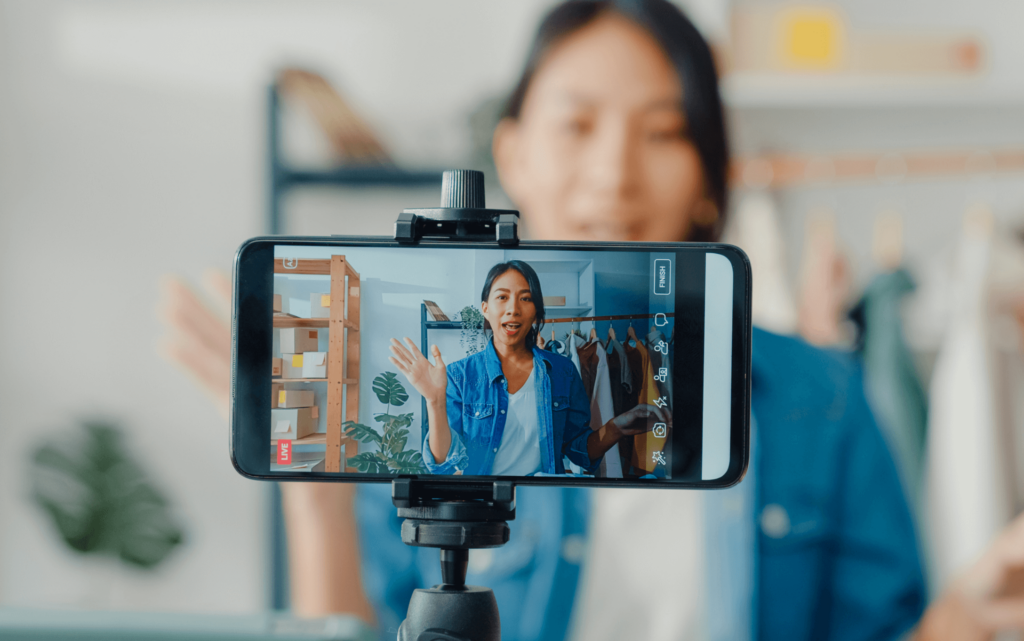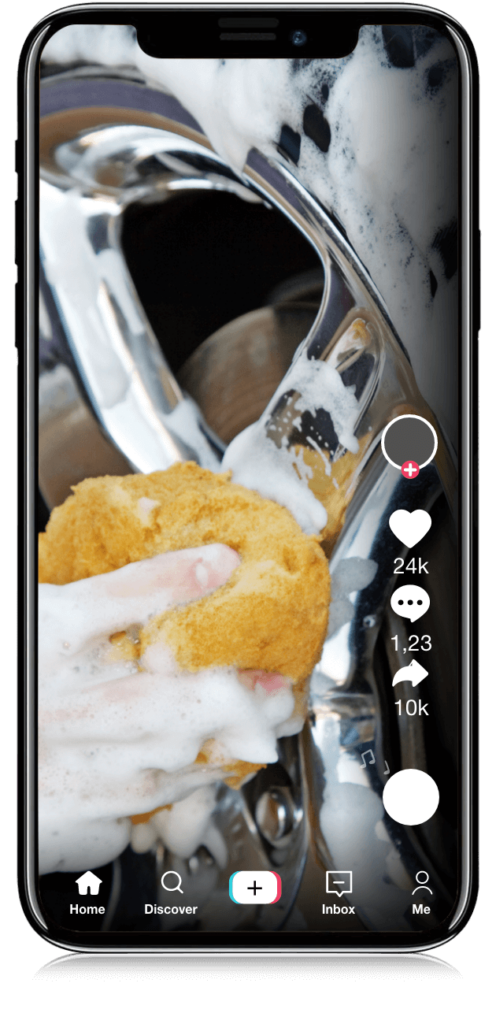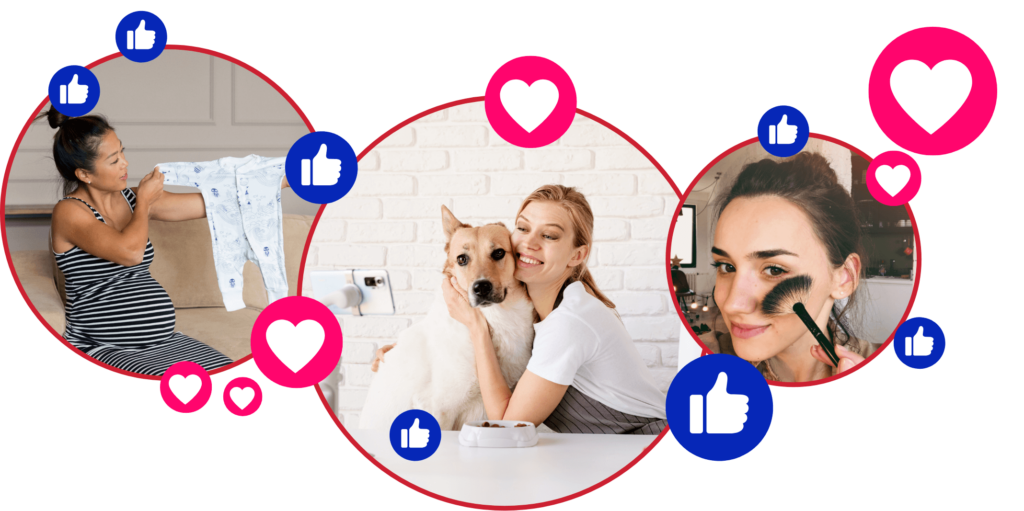The Power of Influencer Marketing Strategy
The changing landscape of influencer marketing and how all consumer brands can benefit.

Influencer marketing is not new, but the way brands can capitalize on it is. New platforms and trends have made influencer marketing accessible to brands who would not have considered the strategy in the past. It is no longer limited to beauty brands and eCommerce. Virtually any consumer product category could benefit from an influencer marketing strategy.
Whether your brand is in-tune with it or not, your products are likely being talked about on social platforms. If they’re not, that’s a bigger problem. Keeping up with influencer trends and adjusting your social media strategy allows you to gain control of and diffuse brand narratives and drive conversion.
Our team of experts has collaborated with influencer marketing expert Jenny Prewitt to provide you with a full scope of the influencer marketing landscape and how your brand may benefit. Read on to learn about how an influencer marketing strategy can make a difference for your brand.
“The power in influencer marketing can be seen just by scrolling through TikTok and Instagram. However, to give it further credibility, it’s important to look at the numbers. In 2022, Insider Intelligence noted that the creator economy was anticipated to become a $104 billion. To observe the impact and opportunity in this established marketing practice, brands need to engage ad-averse consumers by leaning into authenticity and empowering them to co-create content, and that starts with influencers.”

Trends to Pay Attention to:
 Niche Content
Niche Content
The popularity of social platforms like TikTok and YouTube has redefined what is considered mainstream and perpetuated spaces for niche content. TikTok specifically has ushered in an era of highly specific trends and communities. This is likely due to the app’s extremely sophisticated algorithm.
TikTok users have dubbed these niche communities “sides” of TikTok. There is a “side” for just about anything. One of these sides is cleaning TikTok videos. Users showcase themselves cleaning everything from cars to pools to bathrooms. Viewers have expressed a sense of calm and satisfaction derived from this content, making this a popular and wide-reaching “side” of TikTok.
Other niche communities include beauty, cooking, health & fitness, Amazon product hauls, etc. Some users seek out this content by searching for it or by following specific hashtags and creators. Others are targeted with this content based on insights collected by the app and served to users on their personalized feed.
Niche content offers a unique opportunity for brands that would otherwise not consider social media content as a top marketing priority. Their main product offering can now get in on the action. In the case of cleaning content, brands with cleaning products now have a channel to advertise and demonstrate their product on.
“Global interest in micro-communities increases as the appetite for new ideas and narratives grow.”
-Jenny Prewitt
 User Generated Content (UGC)
User Generated Content (UGC)
Consumers are hungry for authenticity. There is growing resistance to overt marketing messages. Even sponsored posts on social media platforms are losing effectiveness. The reality is, word-of-mouth marketing still reigns supreme, even in the digital age. Consumers trust their peers more than they trust even their favorite brand.
User Generated Content (UGC) is content created by users of a platform that are not in direct partnership with the brand. It is created and distributed organically within that platform.
Organically posted content is having a greater impact on consumers. Especially because laypeople have much more visibility on newer platforms. Even without a large following, high levels of engagement are possible given content distribution on these platforms. The influence that creators have isn’t necessarily predetermined by a follower count or traction on previous posts.
This trend has grown rapidly post-pandemic. This is likely due to the growth of platforms like TikTok, changes in online shopping habits, and the elevated need for social trust. Consumers are turning to their peers for honest product reviews and recommendations.
“User-generated content (UGC) has gained a ton of traction as consumers demand higher levels of authenticity. UGC has taken off on TikTok, with the hashtag #UGC garnering 522 million views. According to Stackla, 56% of consumers claimed to be more influenced by UGC post-pandemic than pre-pandemic.”
-Jenny Prewitt
Product reviews have always been important, but they’ve evolved into a new medium. Positive UGC is essential for consumer brands and drives conversion for products.
Micro-Influencers
UGC has ushered in a new era of the influencer. Brands no longer need a huge celebrity endorser to gain credibility. In fact, utilizing “micro-influencers” may have a better payoff as they are able to reach the right audience at the right time.

Micro-Influencers are social media creators that have a smaller audience (typically between 10,000 and 100,000 followers). They have a distinct audience that is interested in aspects of their lifestyle. For instance, “mommy influencers,” “dog parents,” and “beauty influencers.”
“Successful content creators engage their followers through a healthy mix of insights and entertainment, and have established themselves through pillars of knowledge, authenticity and niche perspectives.”
-Jenny Prewitt
Audiences are already engaged with these creators and trust the products they use. Working with them can help brands ensure that their advertising reaches the right audience at the right time with trust implied.
When products gain popularity within the micro-influencing community, it prompts more UGC. Users are motivated to weigh in on their own experience with the product and generate views based on product interest.
“(With this strategy) brands can successfully leverage local heroes and use their platforms to enable these new makers to tell their own stories.”
-Jenny Prewitt
Influence Marketing Has Major Payoffs
Authenticity
 As mentioned, consumers trust their peers to give honest product reviews and only promote what actually works for them. That said, there is already inherent trust for the endorser that is then attributed to the brand.
As mentioned, consumers trust their peers to give honest product reviews and only promote what actually works for them. That said, there is already inherent trust for the endorser that is then attributed to the brand.
Consumers have a less skeptical eye when the person promoting the product doesn’t have a stake in the company. The offerings are perceived as more genuine and have a greater impact on the consumer.
Conversion
 The proof is in the numbers. Consumer brands have observed the impact that micro-influencers and UGC have on brand impact and immediate sales.
The proof is in the numbers. Consumer brands have observed the impact that micro-influencers and UGC have on brand impact and immediate sales.
This is especially true when the creator links the product or offers an incentive to purchase. Consumers can go directly from the content to the product detail page (PDP) and make a purchase. It accelerates the buyer’s journey and impacts in-the-moment decisions.
Community
 Brand loyalty is essential for consumer brands. They now have the power to insert themselves into existing communities and generate loyalty through new channels.
Brand loyalty is essential for consumer brands. They now have the power to insert themselves into existing communities and generate loyalty through new channels.
Utilizing micro influencers and UGC will grant the brand access to these niche pockets of consumers who are already interested in the category or have expressed intent.
Return on Investment (ROI)
 Smaller creators are a more affordable option for brands as they charge less for product promotion compared to those with a larger following.
Smaller creators are a more affordable option for brands as they charge less for product promotion compared to those with a larger following.
Even if the content reaches fewer people, it reaches the right people. Brands can make a smaller investment while reaching their target audiences.
Data
 Existing in these mediums allows brands to collect additional data on consumers and in turn, produce higher-quality content that packs a greater punch.
Existing in these mediums allows brands to collect additional data on consumers and in turn, produce higher-quality content that packs a greater punch.
Additional insights can be generated like social share of voice, brand sentiment, consumer demographics, etc., that would otherwise be unknown to the brand.
Brands also have more direct insight into the effectiveness of their messaging as they can see what conversions are a direct result of the micro influencer are they are working with. Strategies and investments can then be adjusted based on outcomes.